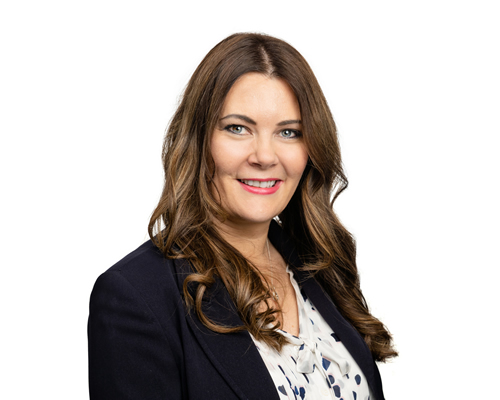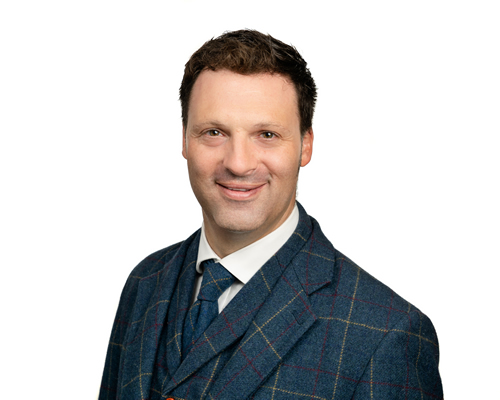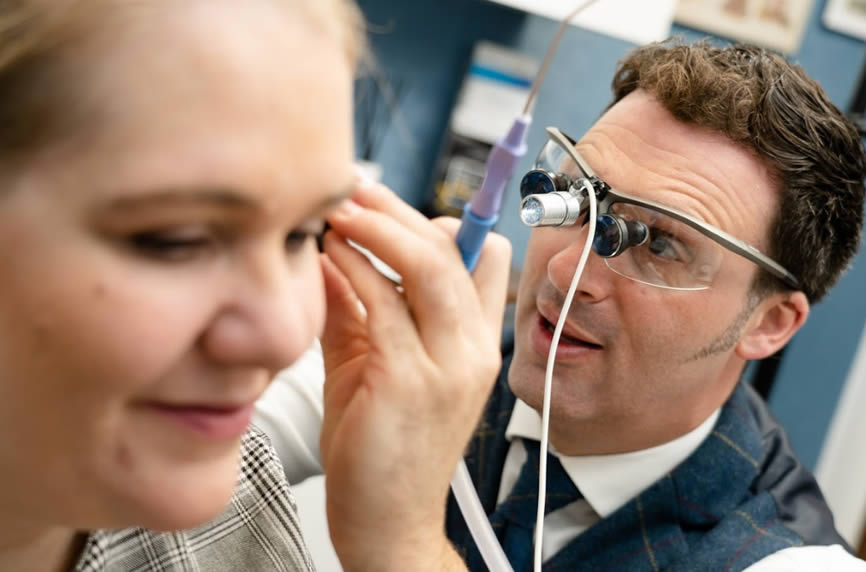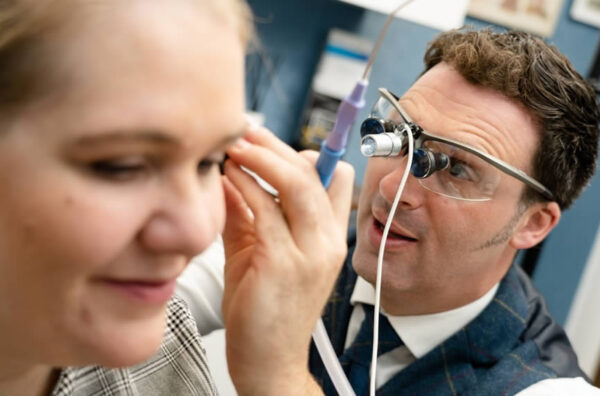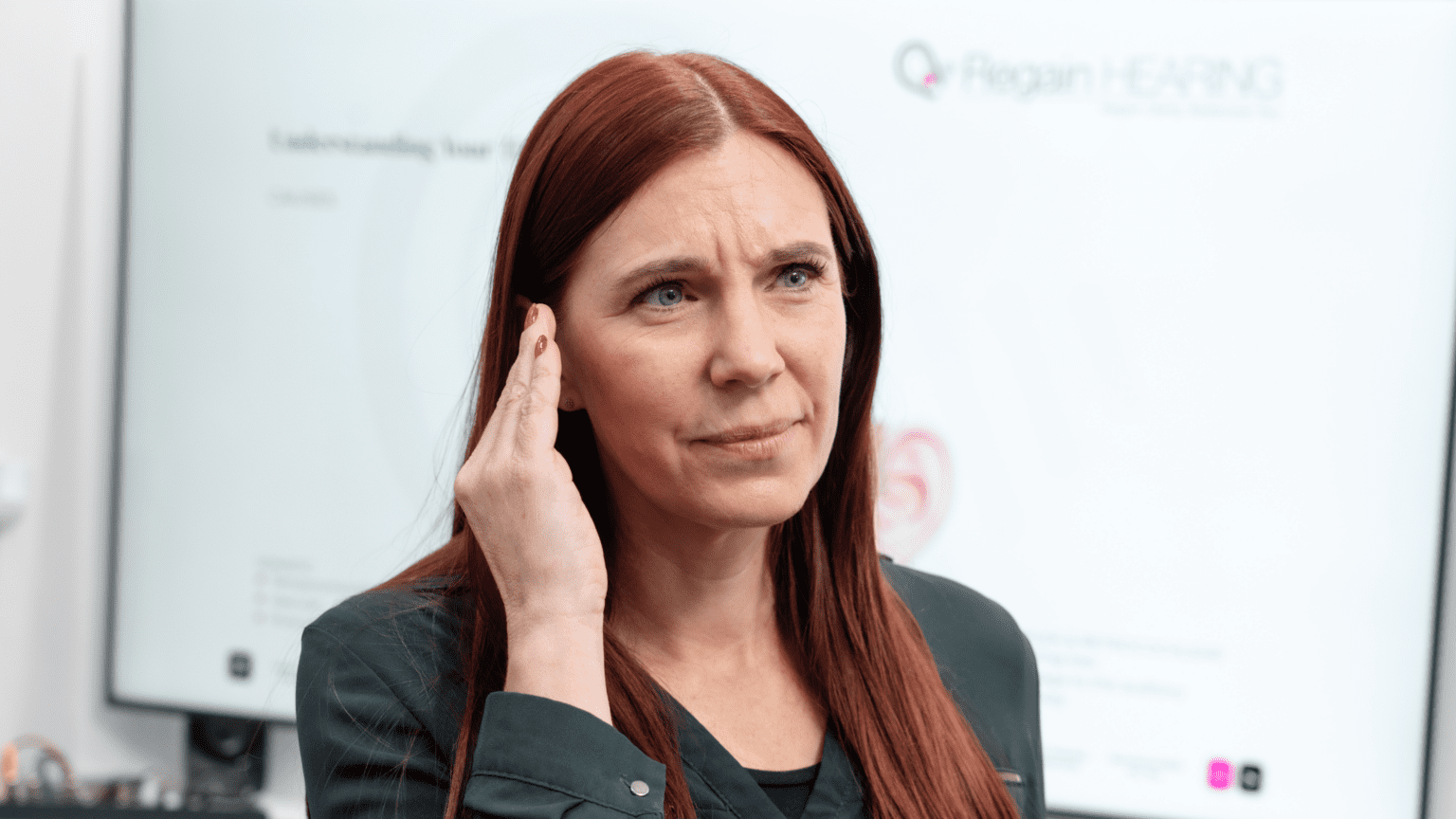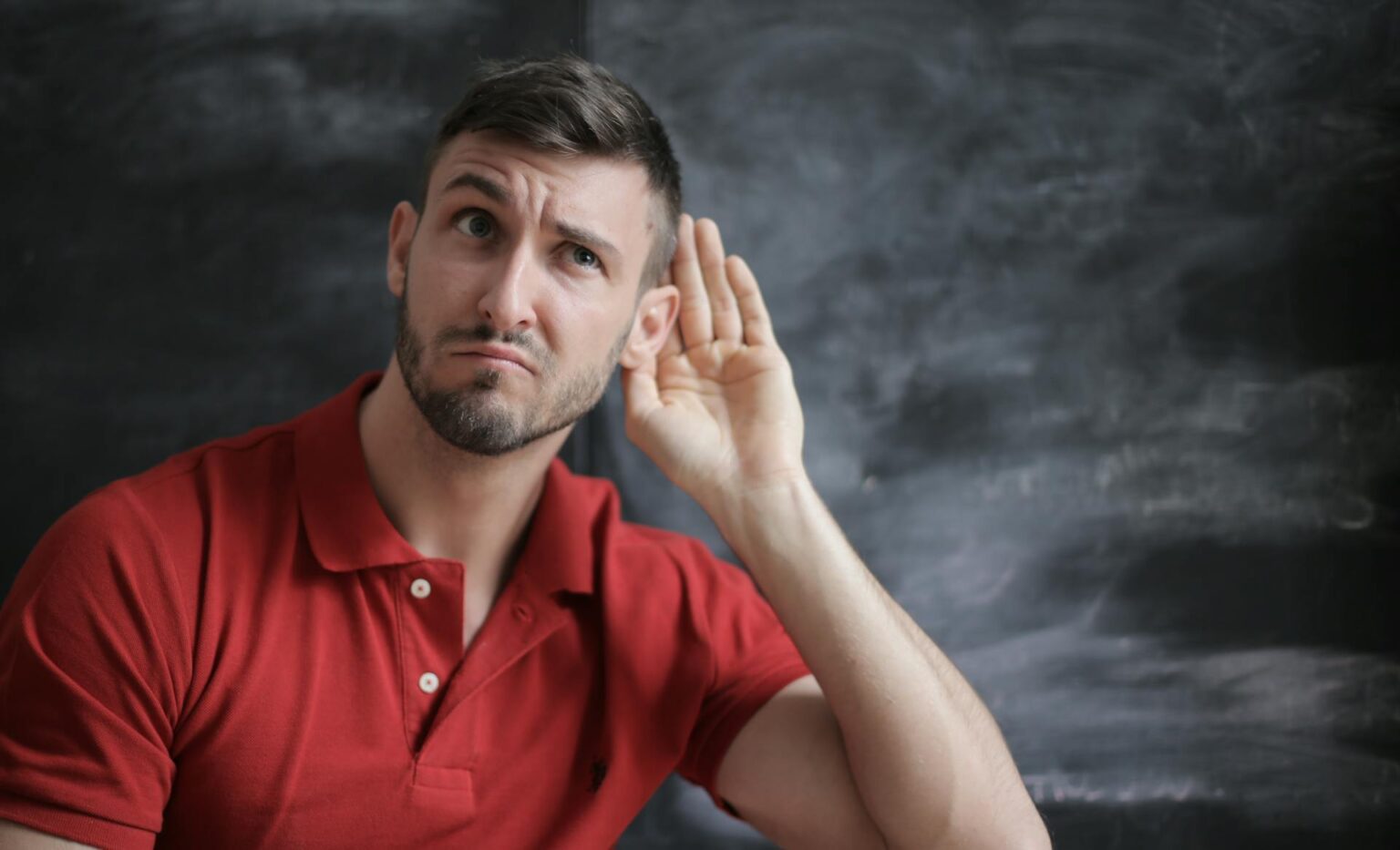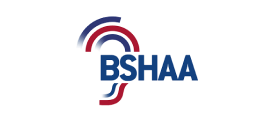Earwax might seem a little gross, but it’s essential to your ear’s function. Earwax is a natural cleanser that picks up dead skin cells, dirt and hair — protecting the ear canal from harmful debris. Studies have shown that earwax possesses antibacterial and antifungal properties, all the more reason to leave it alone.
But, excessive earwax can lead to a hearing loss and discomfort within the ear. Earaches, infections and other hearing problems can also result from excess cerumen.
If you’re experiencing hearing loss or notable discomfort in your ear, you might be suffering from excess earwax buildup. Your initial temptation might be to reach for the cotton buds. Resist this! Inserting objects into your ear can damage the eardrum, ear canal or push cerumen deeper into your ear — escalating the problem. Pushing earwax further into your ear makes it even more challenging to remove, increasing the risk of ear infections. Earwax isn’t formed in the eardrum but rather in the outer third of the ear or ear canal. A buildup of earwax up against the eardrum is likely the result of failed attempts to remove earwax.
The best way to clean earwax safely is to consult a professional. This way, you’re in the hands of experts who can remove earwax from your ear canal effectively and with caution. No matter how careful you think you are, accidents happen. It’s better to minimise the risks rather than suffer the consequences of a perforated eardrum.
The Best Methods for Earwax Removal
There are two main methods of earwax removal: irrigation and microsuction. Irrigation or ear syringing involves shooting a low-pressure stream of water inside the ear to clear the canal. This method is rather messy and can induce discomfort. Additionally, this procedure can’t be carried out on those who’ve recently had ear surgery or are suffering from a perforated eardrum or ear infection.
Microsuction earwax removal gently suctions wax from the ear, and the audiologist uses a microscope to identify blockages to clear. Best for safe earwax removal, this method is precise and minimises the risk of infection.
Related: Syringing vs Microsuction Ear Wax Removal — Which Works Best?
The Best Way to Clean Earwax
If you’re still keen on the do-it-yourself approach, refrain from reaching for the cotton buds again. Try soaking a cotton ball and dripping a few drops of water, a saline solution or hydrogen peroxide into the ear. Make sure your head is tilted, so your ear points upwards, and allow the fluid to seep into the wax. Then, tilt your head the other way onto a cloth to let the wax drain out.
Alternatively, you can buy over-the-counter ear drops that specifically target breaking up earwax. Water based drops such as Earol Distilled Water and Olive Oil Spray lubricates and softens the earwax, making it easier to remove. If you want to remove earwax for cosmetic reasons, the safest way to achieve this is by using a warm damp cloth around your outer ears. This way you’ll pick up earwax and dirt without risking inner ear damage.
Another way to remove earwax yourself is to use a bulb syringe. This involves the same process as ear syringing, squirting water gently into the ear to remove earwax. The downsides of this method are also the same as ear irrigation: increased risk of ear infections and a perforated eardrum.
Important: Do not use a bulb syringe if you have a damaged eardrum. Water in the middle ear can cause a severe infection.
Professional Earwax Removal
A professional audiologist can tackle earwax blockage with more expertise than you can. Consulting specialist methods minimise the risk of infection, eardrum damage and more earwax buildup. Although you can try to remove the earwax yourself, most methods only work to soften the earwax and won’t get rid of it entirely. A clinician has the appropriate tools and knowledge to treat earwax cautiously and effectively.
If you think you’re suffering from excess earwax buildup, don’t wait for it to get worse. If you’re looking for London or Kent ear wax removal, book a hearing consultation with one of our experienced audiologists today.

